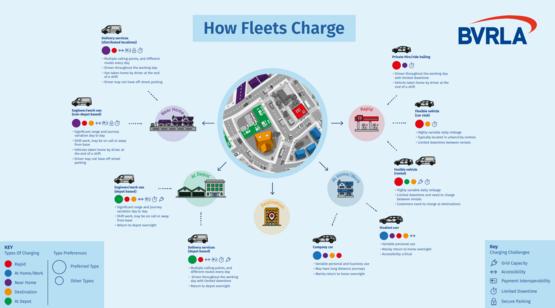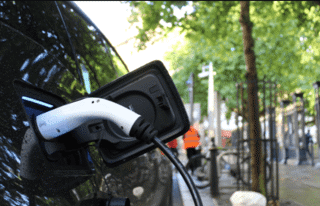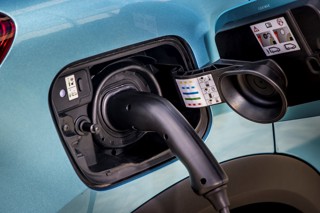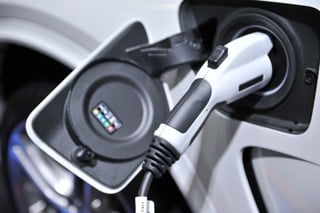The BVRLA has published new guidance for local authorities that outlines the different charging needs for fleets with electric vehicles (EVs).
The association’s new Fleet Charging Guide highlights some key fleet use cases and how they can best be supported on their zero-emission journey with the roll out of charging infrastructure.
Compiling the findings of extensive research conducted with a variety of fleet operators, including those with car clubs and rental divisions, the Guide provides detailed case studies, advice and tangible solutions that can be applied at a local level across the UK.

BVRLA chief executive Gerry Keaney said: “There is a way to go before the UK’s charging network is fit for purpose, not only for the volume of vehicles that will rely on it, but the varying use cases too. Infrastructure has fallen behind and we need a seismic shift in the delivery of charging solutions.
“Up to now, infrastructure decisions have been developed with individual drivers and private use cases in mind. This needs to change so we are providing local authorities with the tools they need to succeed. By having fleets involved in the planning, roll out and maintenance of charging networks, local authorities can ensure they are catering to the broadest number of road users with solutions that will stand the test of time.”
The Fleet Charging Guide contains 12 distinct recommendations, all designed to arm local authorities with the background knowledge they need to develop informed strategies.
Recommendations are grouped into four categories:
- Matching types of provision to emerging gaps in infrastructure: building and development regulations are mandating more charge point installation. Greater consideration needs to be given to ensure those installations are fit for purpose and benefit the biggest number of potential use cases.
- Building trust in the reliability of infrastructure: charging-related downtime has a detrimental impact on productivity and customer service. Drivers need a charging network they can rely on and plan around.
- Ensuring consistent ease of access: many current solutions offer different payment methods, restrict access, or do not cater to users with reduced mobility or disabilities.
- Creating a future framework for decisions based on user need: this considers the ongoing role local authorities will be required to play, in conjunction with national government and private providers. Open collaboration between these parties will mean that long-term solutions can be developed in a way that benefit all road users.
It follows efforts by the Association of Fleet Professionals (AFP) to construct a national map showing street-by-street demand for EV kerbside charging.






















Login to comment
Comments
No comments have been made yet.